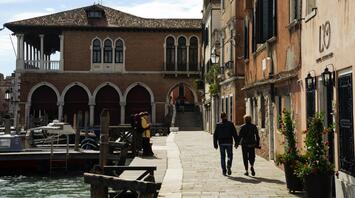Europe: 5 Gorgeous Cities to Visit Where Cars Are Banned

For travelers who prefer to explore cities on foot, here are five European destinations that offer car-free experiences, preserving their historic charm and tranquility.
Venice, Italy
Venice, with its intricate canals and iconic bridges, is unimaginable with cars. The city's unique atmosphere thrives on pedestrian movement. Visitors and residents traverse Venice on foot or by Vaporetto, the famed water-bus. For a touch of romance, gondola rides are a must. The absence of cars ensures that the Serenissima remains an enchanting, timeless city.
Bruges, Belgium
Known as the Venice of the North, Bruges aims to minimize car traffic, especially in its city center. Pedestrian zones dominate, with restricted vehicle access in specific areas during afternoons. Special licenses are required for drivers wishing to enter these zones. This allows visitors to enjoy the serene, cobbled streets and picturesque canals without the intrusion of cars.
Dubrovnik, Croatia
Dubrovnik’s historic center, a UNESCO World Heritage site, is a car-free zone. To maintain its historical integrity, the city has banned vehicles from its core, and parking costs escalate the closer one gets to the center. This ensures that visitors can peacefully explore Dubrovnik’s ancient city walls, cobbled streets, and historic buildings.
Mdina, Malta
Mdina, known as "the city of silence," strictly limits vehicle access to its residents, who are few. This fortified medieval city offers a tranquil environment where visitors can leisurely stroll through its narrow streets, admiring stunning cathedrals and palazzos without the noise and disruption of cars.
Zermatt, Switzerland
Zermatt, a picturesque Swiss ski village, is entirely car-free. Visitors must travel by train or taxi from the nearest city, located 5 kilometers away. Within Zermatt, electric cabs and free electric buses are available, maintaining the town's commitment to a unique and peaceful mountain experience.



















